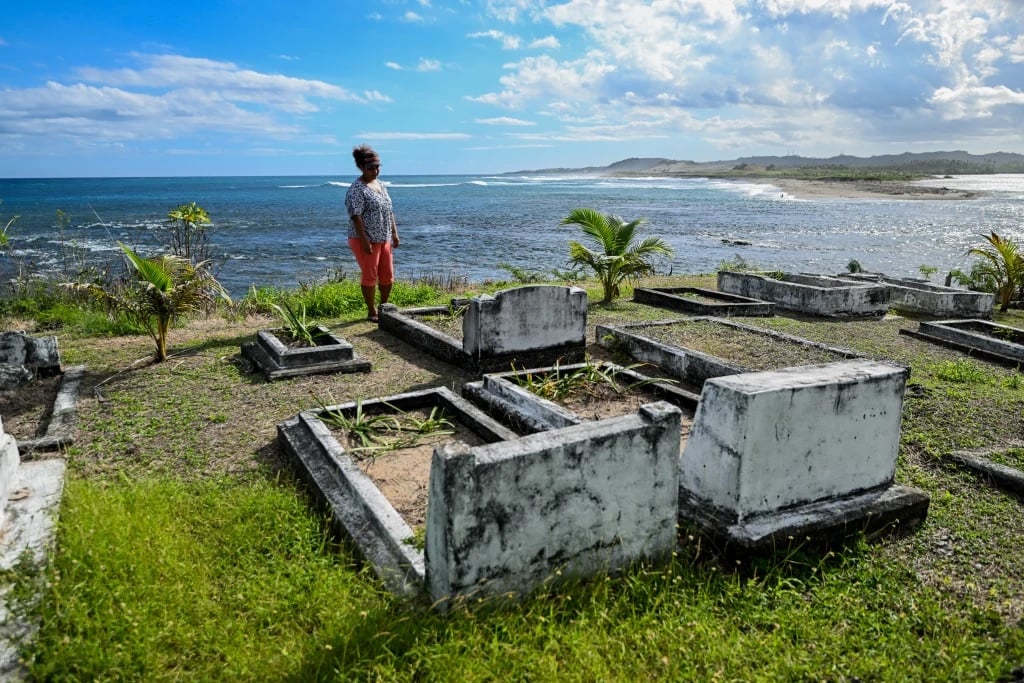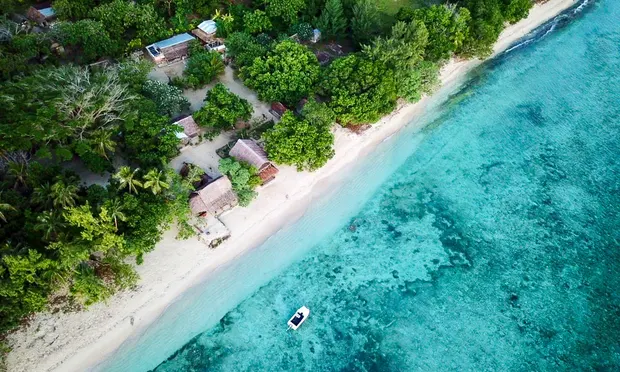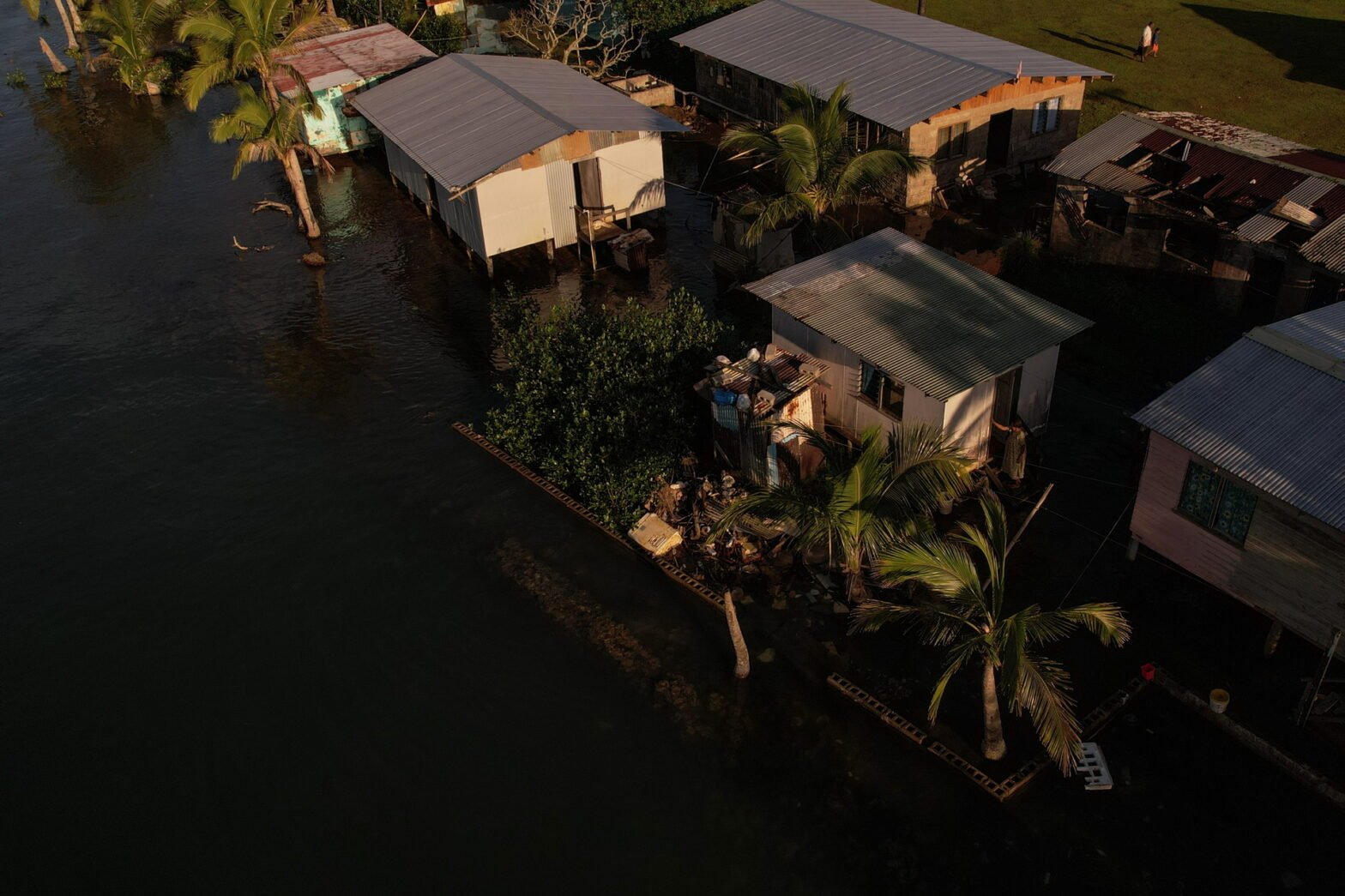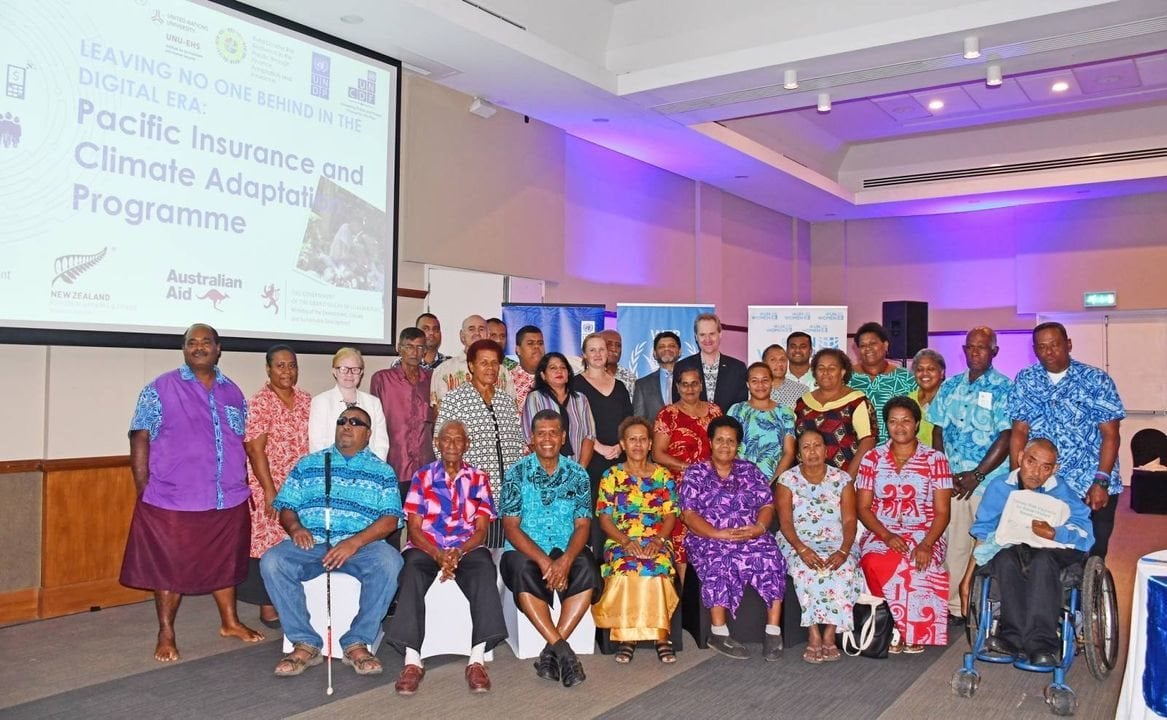All down the 200-kilometre southern coast of Fiji’s Viti Levu island, climate change is not just imperilling the dead, but endangering the living.
Five generations of the Work, Knowles and Lalabalavu families are buried in Sigatoka, central Fiji. Now they are at risk of washing into the sea.
In the distance, the great dunes of Sigatoka are buffeted by winds. Below, the water is translucent, shimmering against a shoal that was once filled with brown seahorses, crabs and mullets. This week the ocean lapped the shore with the threat of economic and environmental destruction.
“My family belongs here,” says Adi Paulini Lalabalavu-Naulogo as she looks over dozens of gravestones that are now inching closer to the water’s edge. “They have been here for hundreds of years. We are just trying to protect this place.”
Year by year the water moves closer to the bones of her third-great-grandparents on the family property. “The king tide just smashes the stone near the graveyard,” she says. “In another 20 years, this place will crack. The sea is vicious here.”
All down the 200-kilometre southern coast of Fiji’s Viti Levu island, climate change is not just imperilling the dead, but endangering the living.
Pacific leaders and local communities are furious at what they see as a lack of climate change action. Australia is the largest emitter in the region but has among the lowest emission reduction targets in the developed world. Climate scientists say it is below the level needed to keep temperatures from rising two degrees, triggering the sea level rises that are now surrounding the Lalabalavu family home.
Foreign Minister Penny Wong and Prime Minister Anthony Albanese claimed that Pacific leaders were “relieved” that an Australian government was taking climate change seriously. But behind closed doors, leaders meeting at the Pacific Islands Forum in Suva have been frustrated that our targets remain below those of the United States and the United Kingdom and that coal has surged to become Australia’s most valuable export.
Palau’s President Surangel Whipps told The Sydney Morning Herald and The Age that Australia should lock in a 50 per cent reduction target by 2030.
Fiji’s Prime Minister Frank Bainimarama also told Albanese that while Labor’s climate pledge of 43 per cent by 2030, “is a step-up that Fiji has long sought”, he had a duty to “every young person in the Pacific to urge [Albanese] to go further for our family’s shared future by aligning Australia’s commitment to the 1.5-degree target”.
In Naveisabasaba, a village 100 kilometres south of Nadi, Kelera and Abel Raidaveta cradle their eight-week-old son Luke. “We don’t know if our kids will be able to stay here,” Kerala says.
Naveisabasaba has been inundated for the last decade. The villagers plant root crops, cassava, dalo and yam which are the staple of most Fijian diets. But the floods keep washing their crops away, cutting the village off from both its food source and its livelihood.
“When the tides come up, the water comes down from the river,” says the village headman, Emoni Rokomoce.
Every time it does, Rokomoce takes to the streets and radio to announce a flood is coming so that farmers can scramble their cows to higher ground. The crops have no chance of being saved. “It’s really affecting us,” says Rokomoce, a towering man of nearly 2 metres, dressed in khaki, who marshals his village like a general.
Rokomoce has asked the government to dredge the river to make it deeper, but 10 years since he first asked, no help has been forthcoming.
Fiji has dozens of communities like Naveisabasaba. The country is the largest economy in the south-Pacific but still struggles to fund a short-term response to climate change. Australia emits 15 metric tons of Co2 per capita, making it one of the largest emitters per person in the world. Fiji emits just 1.95 tonnes per capita but is bearing the brunt of the climate crisis.
“It is not fair,” says Rokomoce.
Vanuatu’s Prime Minister Bob Loughman rammed that message home to leaders at the meeting after growing frustration at the international focus on geopolitical competition between the U.S and China after the intervention of U.S Vice President Kamala Harris last Wednesday.
“I address you in the midst of a climate crisis – a climate crisis which does not come from our Pacific region,” he said. “The time for slow and steady action has passed”
Lavetanalagi Seru, a campaigner with the Pacific Islands Climate Action Network said the message from Pacific youth, frontline communities and civil society was clear. “The climate crisis is a human rights crisis and must be treated with urgency,” she said.
After weeks of pressure to come up with something concrete, the Pacific leaders are set to release their final communiqué from the forum leader’s meeting. It will not include a more ambitious emissions reduction target from Australia.
“We will not be changing our 43 per cent target,” Pacific Minister Pat Conroy told The Sydney Morning Herald and The Age in Suva. “The election commitment is what we are going to fulfil.”
In Sigatoka, Lalabalavu recalled the story of one of her great-grandfathers. The chief of a village in the 19th century, his community was forced to flee across the river to higher ground.
The Fijian government has tried to dredge the river around Lalabalavu’s home, but it has made a bad problem worse by shifting sandbanks around her home and redirecting fish away from the river mouth. Like most temporary man-made solutions, it does not address the root cause of the problem – temperature changes causing sea level rises.
“The old village ran away because of a tsunami,” says Lalabalavu.
Two centuries later, she struggles to imagine a future without her home next to the graves of her ancestors.
“We were born by the sea, we will die by the sea,” she says.
This story was written by Eryk Bagshaw and Tim Vula, originally published at The Sydney Morning Herald (SMH) on 14 July 2022, reposted via PACNEWS.




